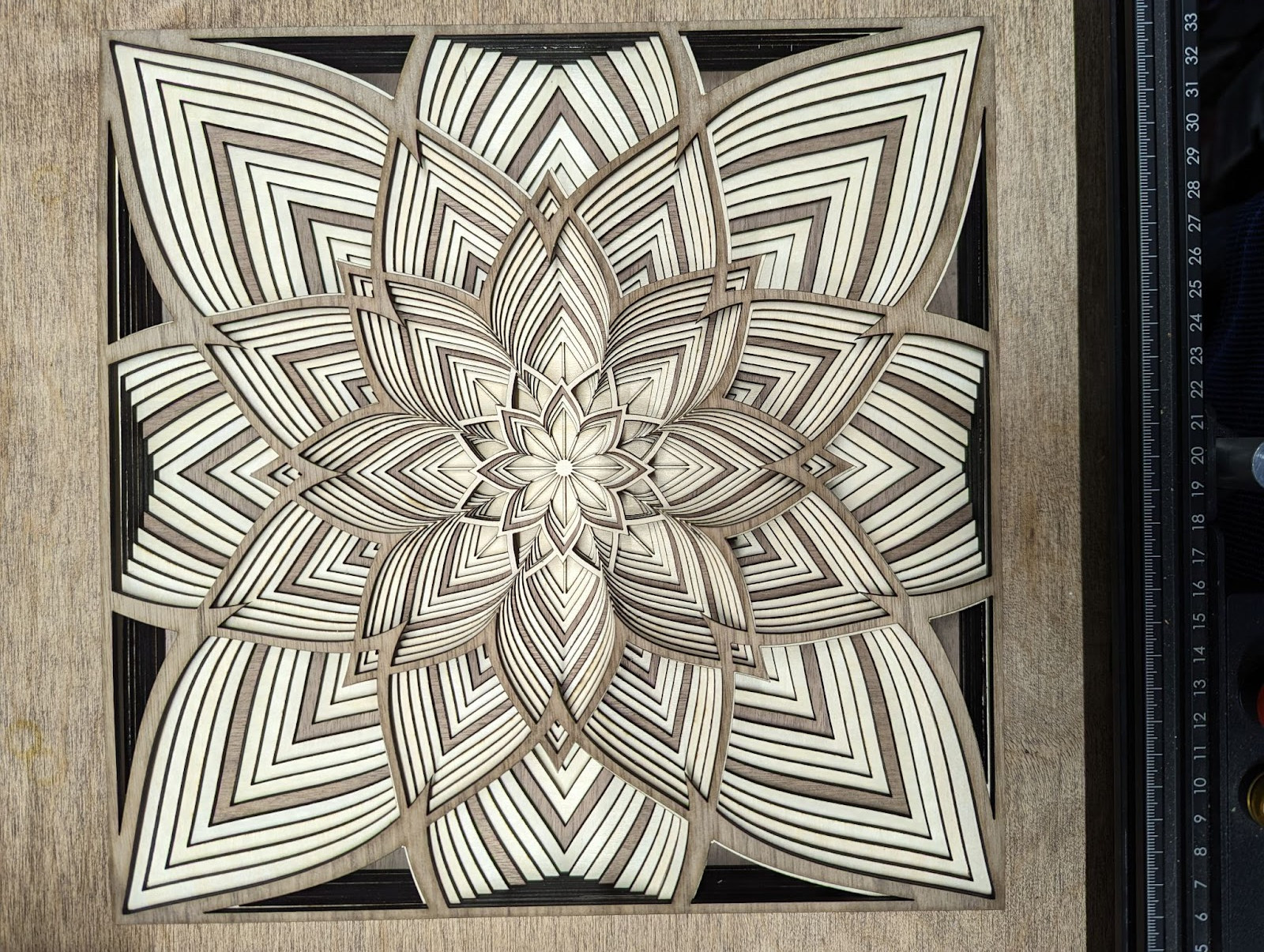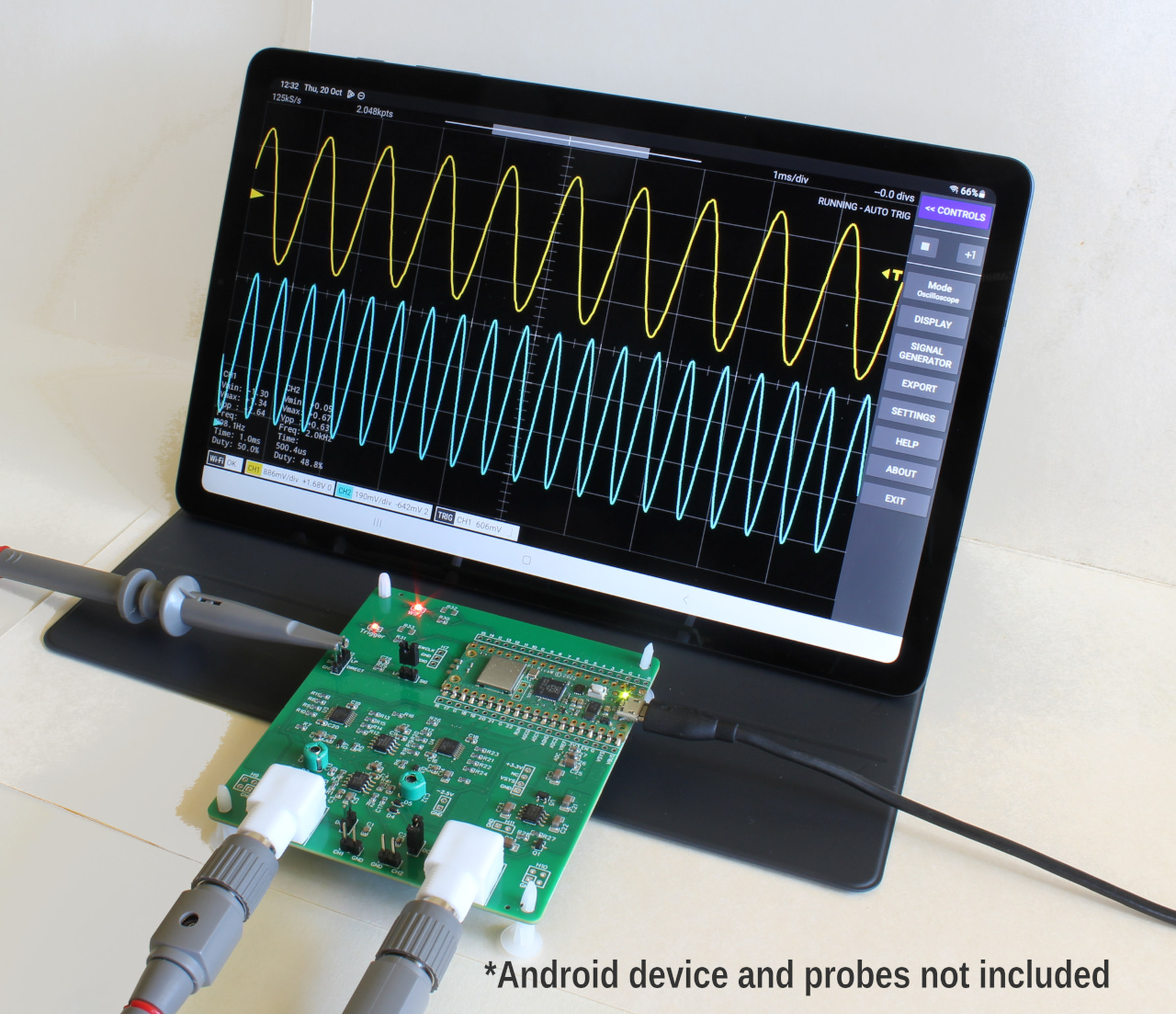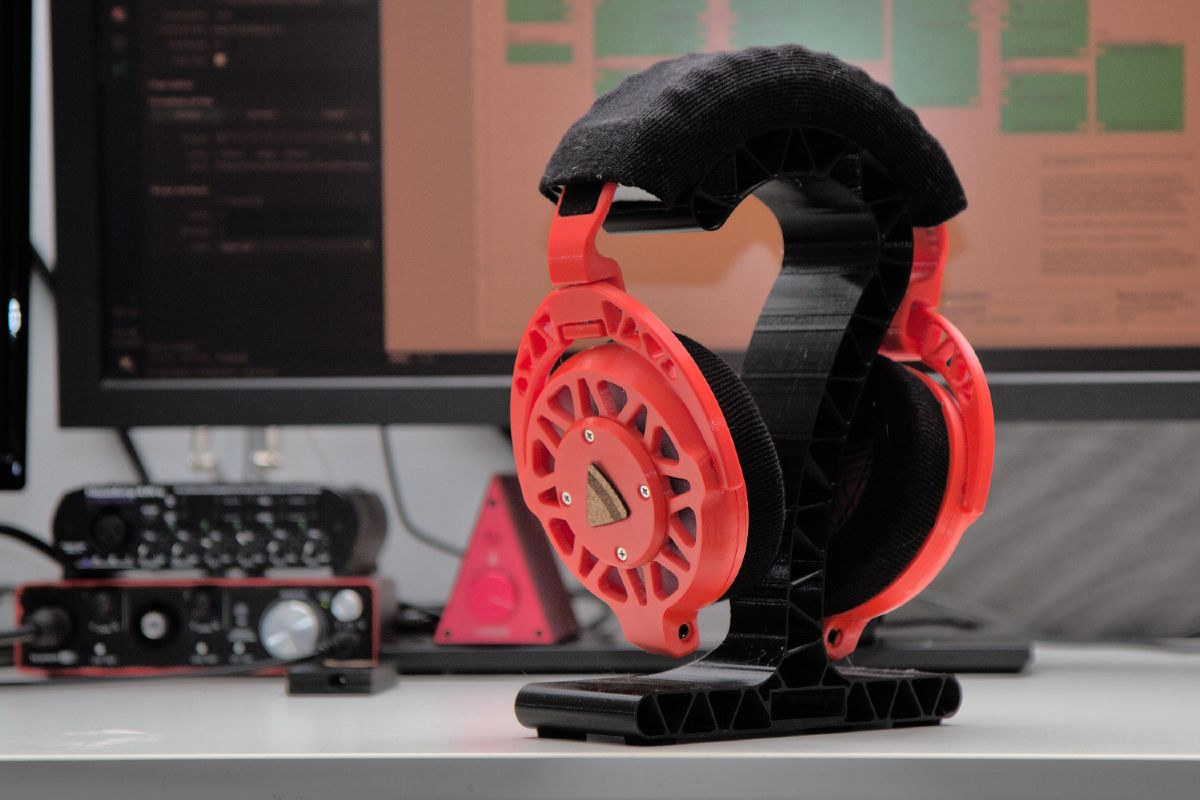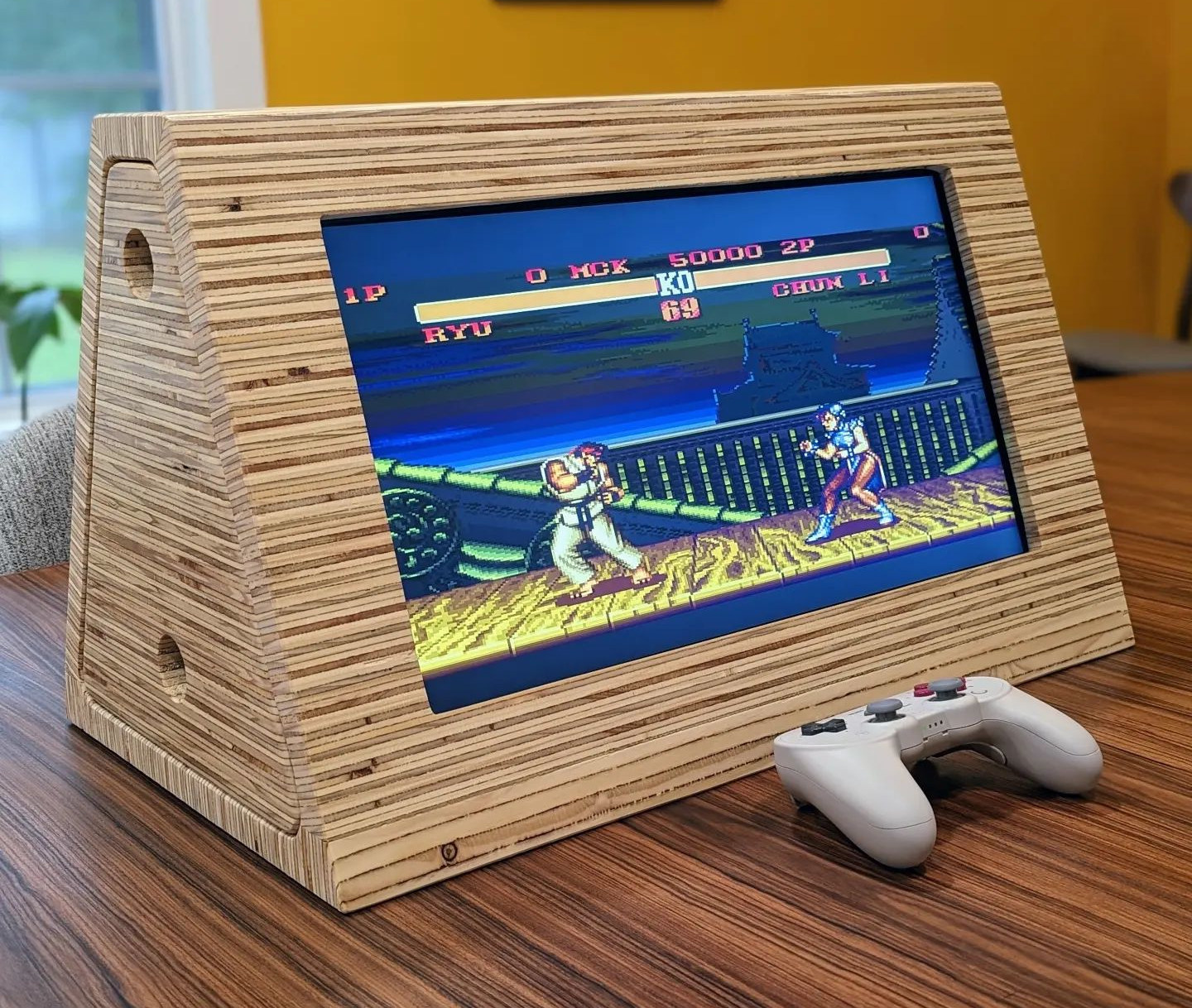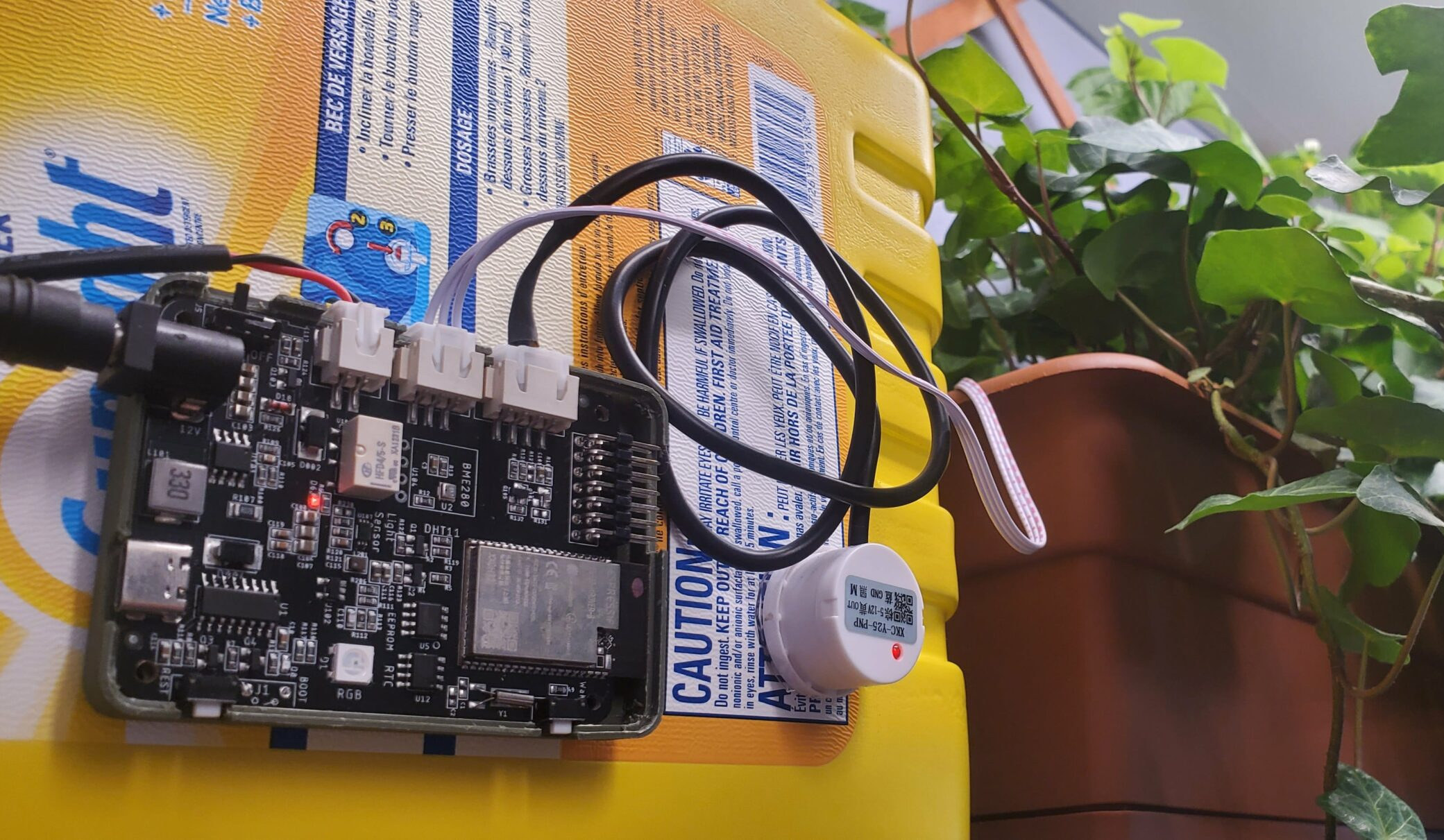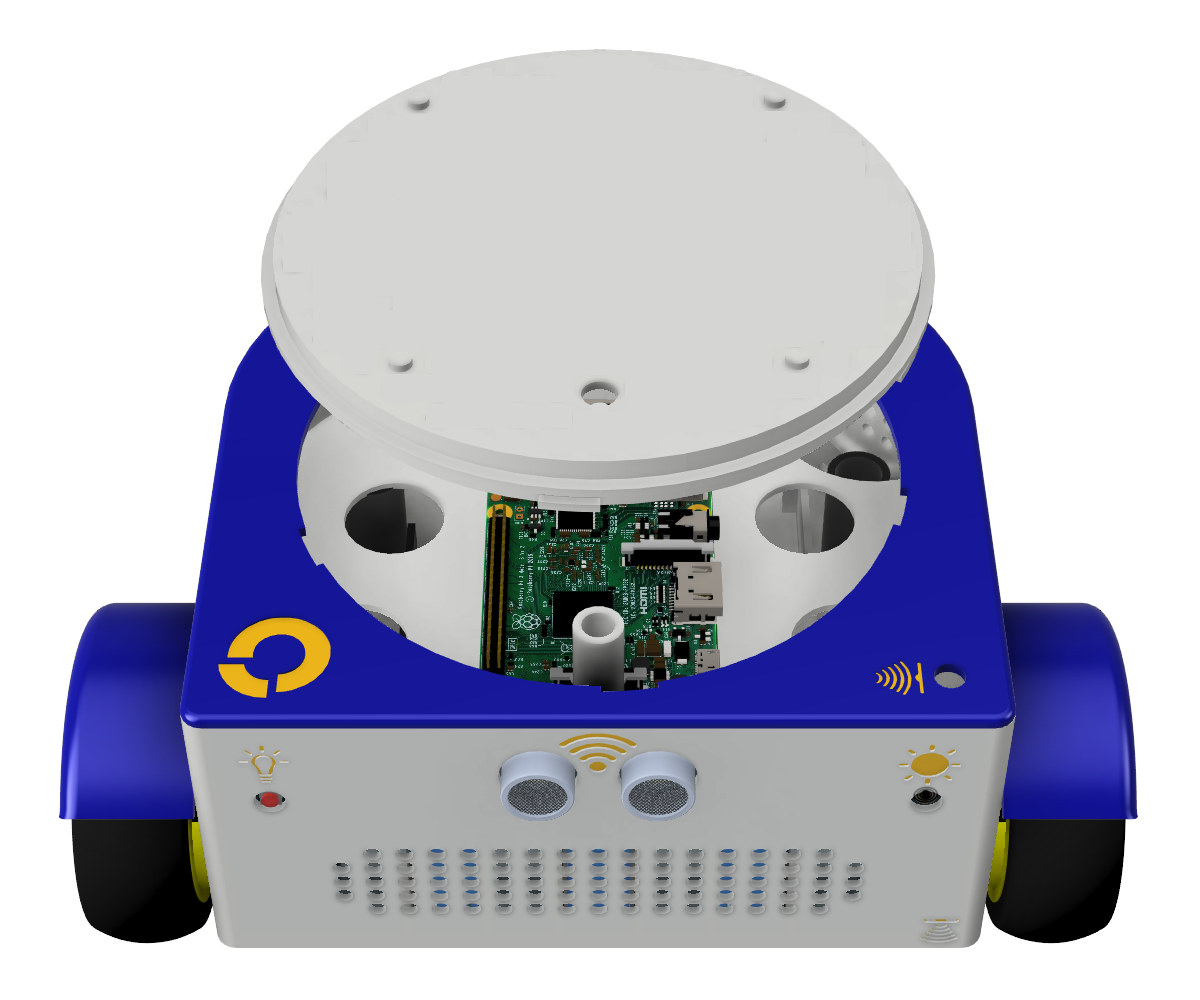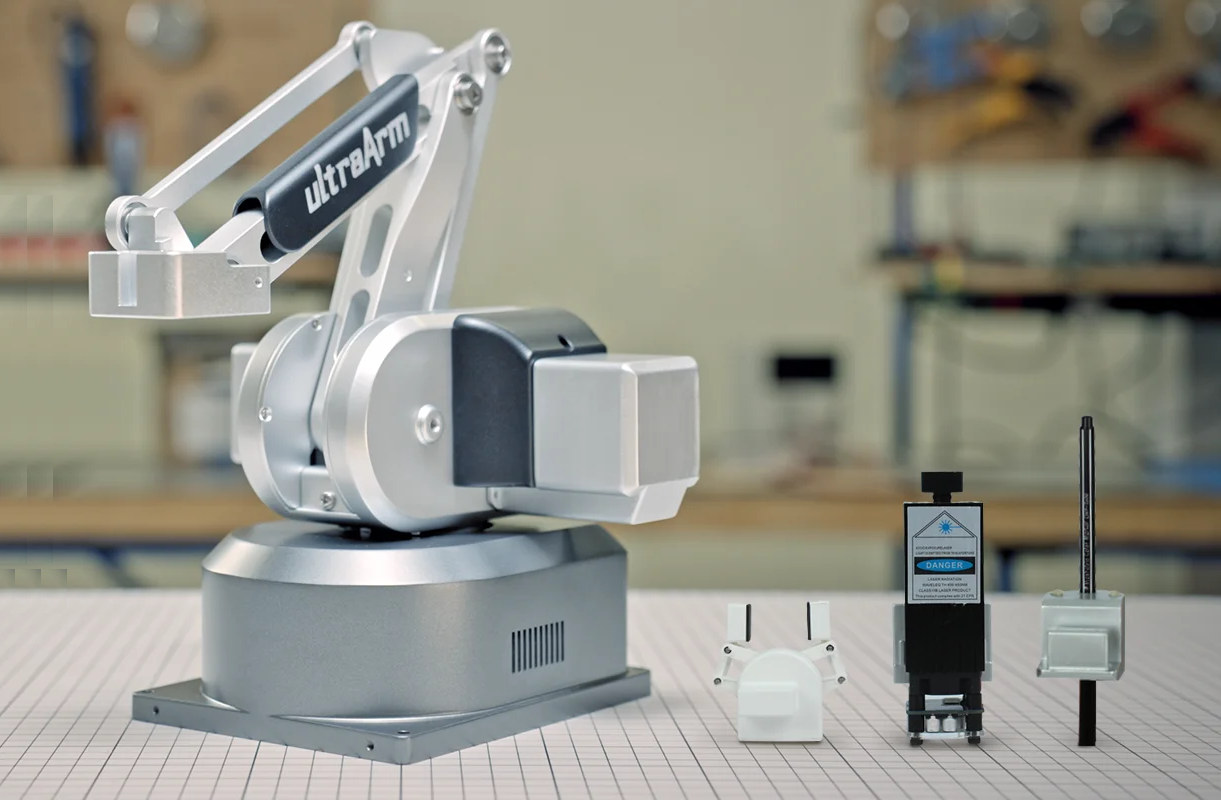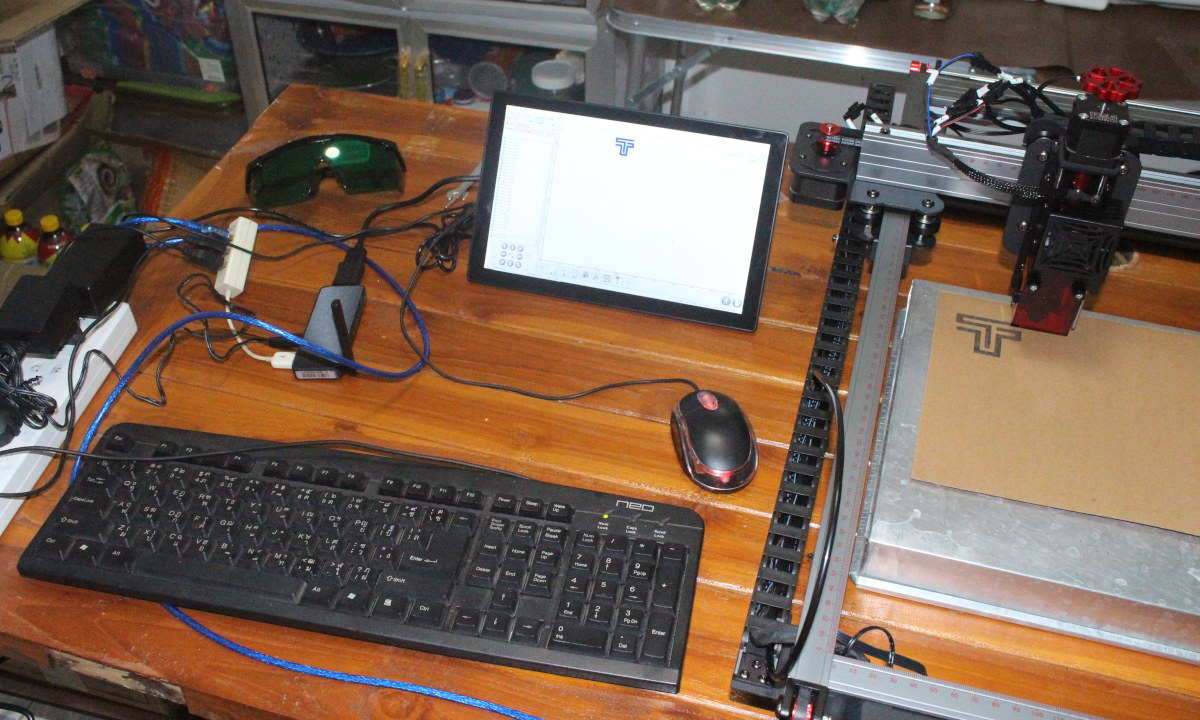Hey Karl here. I am going to be sharing my experience with the xTool D1 Pro 20W. It is a 20W laser cutter/engraver with a 340x390mm working area. It has been heavily reviewed and I will comment on a few points I have not seen spoken about. I join a lot of Facebook groups for these reviews to get real-world feedback and ideas to write about. With nearly all forms of digital fabrication, I regularly read about misconceptions and frustration that stem from unknowingly purchasing a machine that requires a substantial amount of time and patience to learn. For this review, I kept a daily log and will summarize the time it took me to complete one project. I did get sidetracked on a few aspects and will take that time out. I am excited to share the results of the laser power testing I have been doing. Logs will […]
2-channel DSO-500K WiFi oscilloscope is based on Raspberry Pi Pico W board
FHDM TECH DSO-500K is a 2-channel 500kS/s WiFi oscilloscope based on Raspberry Pi Pico W board that can also work over USB, and offers an analog bandwidth of up to 150kHz. We previously had seen the Raspberry Pi Pico board used as a logic analyzer, so it should come as no surprise that somebody has also come up with a Raspberry Pi Pico W-based oscilloscope that enabled visualization on Android over WiFi or USB. DSO-500K specifications and features (through the Scoppy app): MCU board – Raspberry Pi Pico W board with RP2040 dual-core Cortex-M0+ microcontroller, 2MB SPI flash, WiFi 4 and Bluetooth connectivity Sample rate – Up to 500kS/s sample rate (250kS/s with both channels enabled) Analog bandwidth – 150kHz Record length – 2048 samples per channel in RUN mode, 100kS total for single shot captures Inputs – BNC connectors or 0.1-inch headers Input Impedance – 1MΩ / 22pF Input […]
Ploopy – 3D printed open-source hardware headphones feature Raspberry Pi RP2040 MCU, TI PCM3060 24-bit DAC
I don’t think I’ve ever written about open-source hardware headphones. But that’s precisely what Ploopy offers with an amplifier based on a Raspberry Pi RP2040, a Texas Instruments PCM3060 24-bit DAC, and an amplifier circuit, as well as 3D printed parts and open-source firmware written in C. As we’ll see further below the project is reasonably well documented, and you can either build it from scratch, purchase a fully-assembled kit, or something in the middle. I suppose you could even do some knitting since woven covers are part of the build just in case making your own PCBs and 3D printing parts are not your things. The electronics are comprised of two boards: The Gould amplifier board with the Raspberry Pi RP2040, Texas Instruments PCM3060 24-bit 96/192 kHz DAC, and several TI OPA1688 audio operational amplifiers The Mazzoleni driver flex boards going into the left and right rings with a […]
Raspberry Pi 400 powers dual-display retro-gaming console
“Block after Block” has designed a dual-display tabletop retro-gaming console using plywood edge grain and a Raspberry Pi 400 keyboard PC that allows players to physically face each other during a fight or other gameplay. While there’s a galore of projects based on Raspberry Pi SBCs, the Raspberry Pi 400 keyboard PC is more like a consumer product due to its form factor, but Block after Block integrated the PC into its own retro-gaming console which involved a lot of woodworking skills and installing RetroPie on the Pi 400 device. This DIY project mostly involves spending time in a workshop cutting wood, and once you’re done with this part, it should be pretty straightforward. The following items are required for the project: A Raspberry Pi 400 keyboard PC Two monitors (second-hand monitors will do) An HDMI splitter to mirror the output from the Pi 400 along with a micro HDMI […]
Eduponics Mini v2.0 Smart Agriculture IoT kit gets more flash, new sensors, 4-channel valve board (Crowdfunding)
Eduponics Mini v2.0 is a Smart Agriculture IoT kit based on the ESP32 wireless microcontroller with built-in sensors to measure temperature, humidity, barometric pressure, and ambient light, and interfaces to connect water level and soil moisture sensors. The new board builds upon the Eduponics Mini introduced two years ago, but based on the 8MB flash version of the ESP32-WROVER-B module, a different mix of sensors, a BM8563 RTC module replacing the DS1307 RTC chip, and the addition of Grove connectors for external sensors from companies such Elecrow. Eduponics Mini v2.0 specifications with highlights in bold or strikethrough showing the differences with the first revision of the board: Wireless module – ESP32-WROVER-B module with ESP32 Wi-Fi and Bluetooth SoC, 8MB QSPI flash loaded with MicroPyhon firmware, 8MB SPRAM, PCB antenna Built-in sensors BH1750 I2C light sensor Footprint for BME280 I2C temperature, humidity, and barometric sensor QMP6988 I2C Barometric air pressure sensor […]
FOSSBot open design 3D printed educational robot is made with Raspberry Pi and off-the-shelf parts
FOSSBot is an “open design” 3D printed educational robot comprised of a Raspberry Pi SBC and various off-the-shelf modules, as well as open-source software that can be used for education purposes. The FOSSBot DIY robot has been developed by the Harokopio University of Athens and the Greek Free and Open Source Software (GFOSS) community, and builds upon the “GSOC 2019 – A DIY robot kit for educators” with the main goal being to have a platform to “familiarize teachers with modern education models based on the S.T.E.A.M approach. (Science, Technology, Engineering, Arts, Mathematics)”. FOSSbot key components: SBC – Raspberry Pi Zero W, Raspberry Pi 3, or Raspberry Pi 4. Mechanically and electrically compatible Raspberry Pi alternatives could be an option too although part of the software would have to be modified Storage – 32GB MicroSD card Expansion board – Adafruit Perma-Proto HAT for Pi – No EEPROM to connect sensors […]
ultraArm P340 Arduino-based robotic arm draws, engraves, and grabs
Elephant Robotics ultraArm P340 is a robot arm with an Arduino-compatible ATMega2560 control board with a 340mm working radius whose arm can be attached with different accessories for drawing, laser engraving, and grabbing objects. We’ve previously written and reviewed the myCobot 280 Pi robotic arm with a built-in Raspberry Pi 4 SBC, but the lower-cost ultraArm P340 works a little differently since it only contains the electronics for controlling the servos and attachments, and needs to be connected to a host computer running Windows or a Raspberry Pi over USB. ultraArm P340 specifications: Control board based on Microchip ATMega2560 8-bit AVR microcontroller @ 16MHz with 256KB flash, 4Kb EEPROM, 8KB SRAM DOF – 3 to 4 axis depending on accessories Working radius – 340mm Positioning Accuracy – ±0.1 mm Payload – Up to 650 grams High-performance stepper motor Maximum speed – 100mm/s Communication interfaces – RS485 and USB serial Attachment […]
TwoTrees TS2 laser engraver review – Part 2: A beginner’s experience with LaserGRBL and MKSLaser
I’ve now had time to play with TwoTrees TS2 laser engraver after doing an unboxing and providing assembly instructions last month, so I can report my experience in this review using LaserGRBL program and MKSLaser mobile app. Note that this is my first laser engraver, and I’ll detail the many issues and mistakes I’ve come across so it might be useful to other beginners. Testing TS2 laser engraver assembly Before doing some engravings and cuts, we’ll have to test the TS2 to make sure it was properly assembled and we can operate it normally. The company is recommending the open-source and free LaserGRBL or the paid Lightburn program to control the TS2. I went with the former which happens to only work in Windows or macOS, while most of my hardware is running Linux or Android. So I dug out an older HDMI PC stick, the MeLE PCG01 running Windows […]


